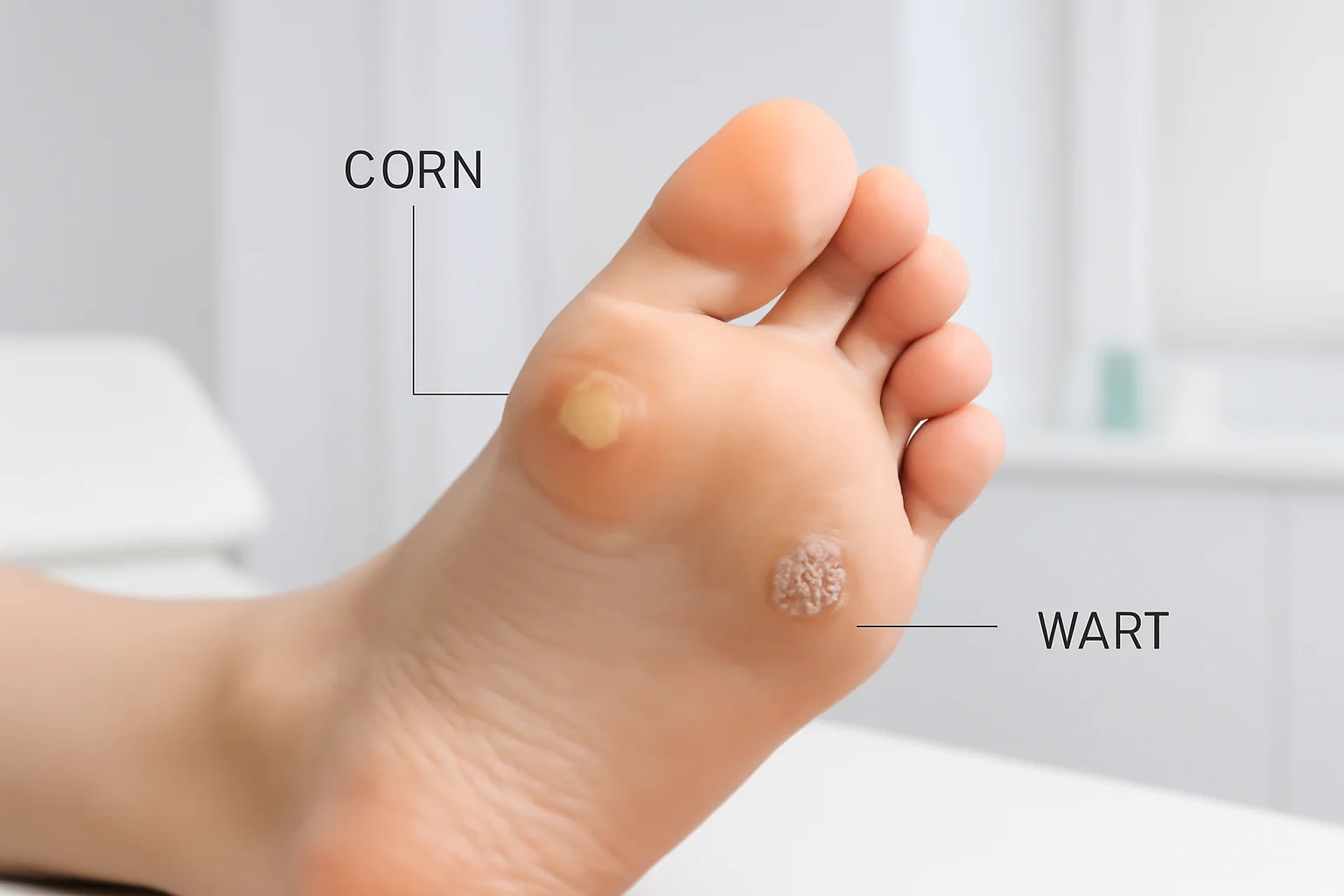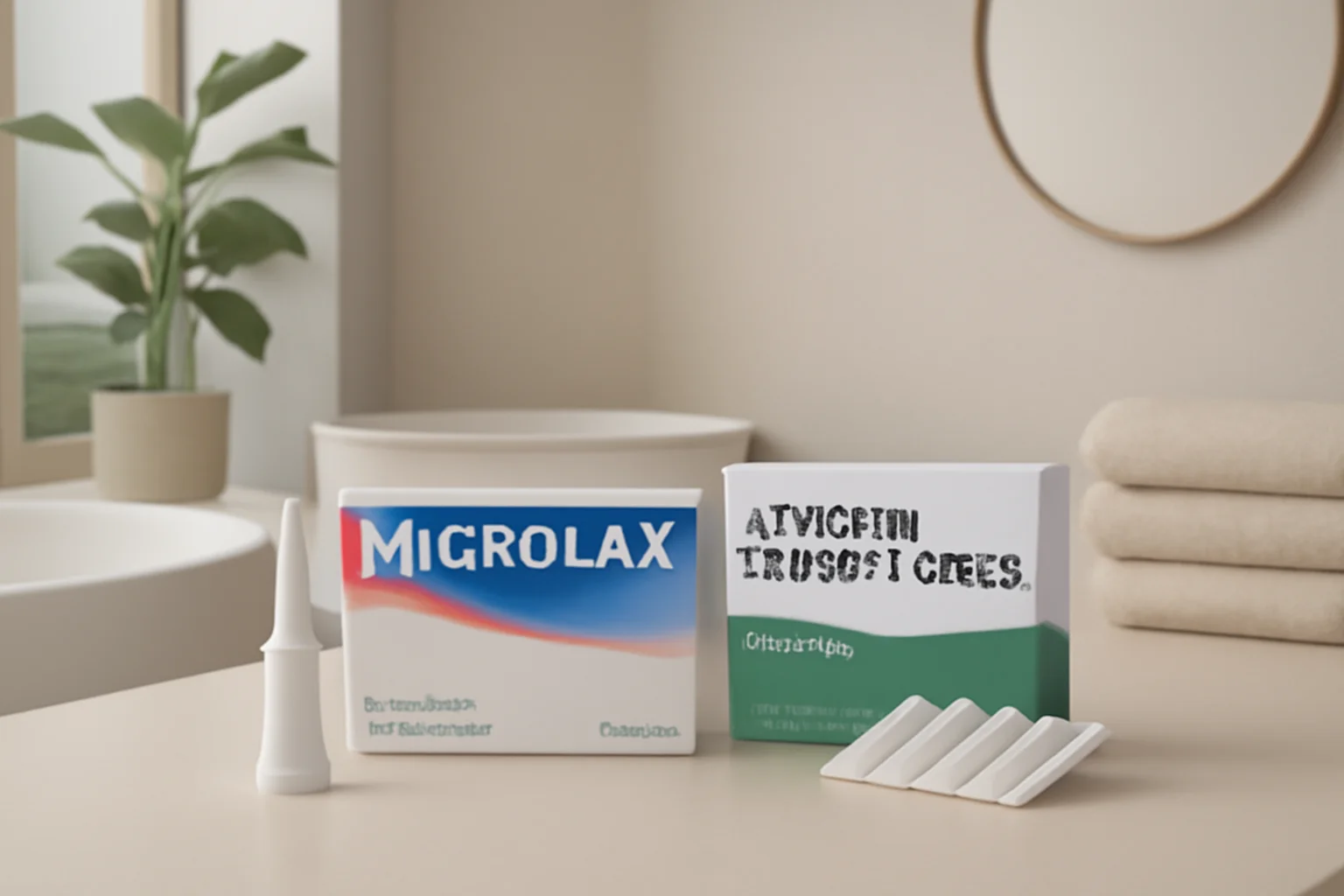
Corn or wart? What is the difference and how to treat them?
A skin problems that appear on our feet can often cause discomfort and are not only aesthetically bothersome. Two common occurrences, corns and warts, can happen in many people’s lives. Although both involve thickening of the skin, they develop for different reasons and require different treatment methods. Corns most often appear between the toes or on the sole of the foot and are typically a result of pressure or friction. In contrast, warts are caused by a viral infection and develop in the upper layer of the skin, often on the hands or soles. Distinguishing between the two conditions is not always straightforward, but it is important for applying the appropriate treatment.
Understanding the causes, symptoms, and treatment options for corns and warts can help us take the right steps in addressing our skin issues. Making an accurate diagnosis and selecting the appropriate therapy is essential for effectively managing painful and bothersome skin problems.
Corns: Symptoms and Causes
Corns are thickened areas of skin that develop on various parts of the foot, most commonly on the sole, between the toes, or on certain areas of the foot. The main cause of their formation is the continuous rubbing or pressure on the skin, often due to wearing uncomfortable footwear. Corns develop as a natural protective response of the skin to shield the deeper layers from injury.
Corns are typically yellowish or brown in color and protrude from the surface of the skin. They can be painful to the touch, especially when wearing tight shoes. Corns are commonly found between the toes, on the sole, or at the heel, and are particularly prevalent among those who spend a lot of time standing or walking.
To prevent corns, it is important to choose the right footwear that is sufficiently spacious and comfortable. The toes should have enough room to avoid friction. Additionally, regular foot care can contribute to preventing the formation of corns. If a corn has already developed, various treatment options are available, such as using insoles, foot care, or having the corn removed by a professional.
Warts: Symptoms and Causes
Warts are viral skin growths that develop due to various strains of the human papillomavirus (HPV). They appear in the upper layer of the skin and can vary in shape and size. The most common types include common warts, plantar warts, and flat warts.
Common warts typically appear on the hands and fingers and have a rough, raised surface. Plantar warts are found on the soles of the feet and can often be painful, as they penetrate deeper layers of the skin under pressure. Flat warts are smaller and have a smoother surface, often occurring in children.
The spread of warts is closely related to viral infection, which can be transmitted through skin-to-skin contact. Those who frequently visit swimming pools or public showers are at a higher risk of developing warts. It is important to note that warts can cause pain, especially when located on the soles.
Treatment for warts varies and can include topical treatments such as freezing or acid treatments, as well as medicinal solutions. Doctors may also recommend surgical removal of warts if they do not respond to conservative treatments.
Distinguishing Between Corns and Warts
Distinguishing between corns and warts is crucial for selecting the correct treatment. Although both represent skin issues, their symptoms and appearance differ. Corns are typically yellowish or brown, rough, and protrude from the surface of the skin. They can be painful, especially if they rub against shoes.
In contrast, warts generally have a rough, raised surface and can be painful, particularly on the soles. Warts often appear in multiples, while corns usually present as one or a few. The color of warts can vary, being lighter, darker, or even skin-colored.
When making a diagnosis, it is advisable to consult a doctor who can provide an accurate diagnosis through a dermatological examination. The doctor can differentiate between a corn and a wart based on appearance, location, and texture. An accurate diagnosis aids in selecting the most appropriate treatment, thereby avoiding unnecessary suffering and incorrect treatments.
Untreated Corns and Warts: Possible Complications
Both corns and warts left untreated can lead to various complications. In the case of corns, the most common issue is increasing pain, which makes walking and performing daily activities difficult. Untreated corns can often lead to inflammation, causing even greater discomfort.
For warts, the greatest risk is the spread of the virus. Untreated warts can spread to other areas of the skin or even to other people. Additionally, if warts are located on the soles, increased pressure during foot movement can cause pain and inflammation. Untreated warts can lead to more serious skin problems.
To prevent these issues, it is important to pay attention to the health of our feet. Wearing appropriate footwear, practicing foot care, and regularly checking the skin can help avoid the development of corns and warts. If they do appear, it is advisable to consult a professional as soon as possible to avoid further complications.
It is important to note that the information provided in this article is for informational purposes only and does not replace medical advice. Always consult a doctor for health issues!

